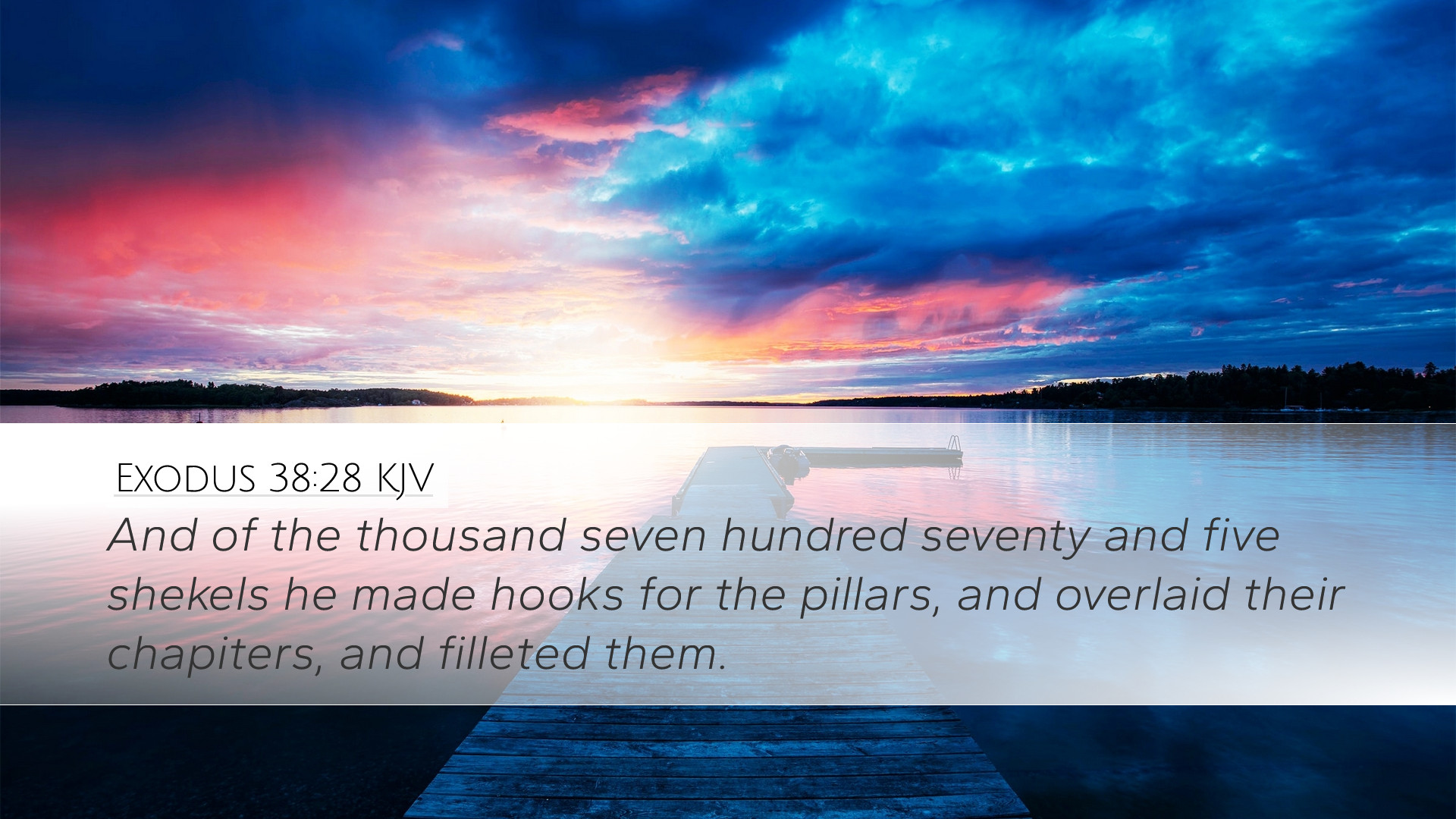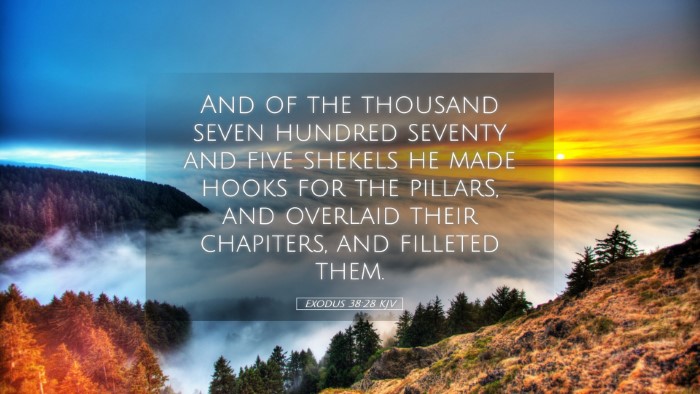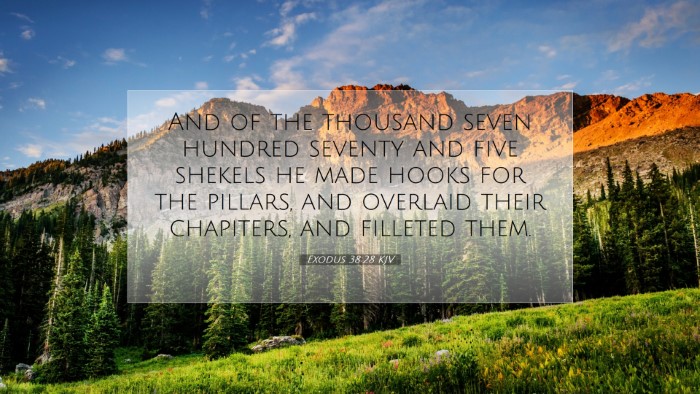Commentary on Exodus 38:28
Exodus 38:28 states: "And of the thousand seven hundred seventy and five shekels he made hooks for the pillars, and overlaid their chapiters, and made bands to bind them." This verse details the materials and craftsmanship involved in the construction of the Tabernacle, particularly the elements related to the pillars.
Historical Context
The construction of the Tabernacle was a significant event in the history of Israel. It served as the dwelling place of God among His people during their journey through the wilderness. This verse falls within the detailed accounts of crafting the Tabernacle, which occupy several chapters in Exodus. The materials for the Tabernacle, including those described in Exodus 38:28, were given as offerings from the Israelites, demonstrating their commitment and reverence to God.
Insights from Public Domain Commentaries
Matthew Henry's Commentary
Matthew Henry notes that the offerings were willingly given, which speaks to the hearts of the people. In Exodus 38:28, the shekels mentioned reflect the community's contribution and participation in the divine work of worship. Henry emphasizes that every part of the Tabernacle's construction had a purpose and meaning, serving to glorify God. The hooks for the pillars signify stability and the idea that God desired His people to be firmly anchored in faith.
Albert Barnes' Notes on the Bible
Albert Barnes highlights the significance of the shekels mentioned in the verse. He points out that the specific mention of a precise amount suggests careful accounting in the affairs of the temple service. Barnes elaborates that not only were materials gathered, but the craftsmanship distributed among artisans shows an organized structure in the community's worship. The hooks and bands created through this financial offering symbolize God's desired order in worship and ministry.
Adam Clarke's Commentary
Adam Clarke draws attention to the details in the text, indicating that the hooks and bands served both functional and symbolic roles. The hooks were critical in ensuring that the structure of the Tabernacle remained intact and upheld during both travel and worship. Clarke suggests that the meticulous care in crafting these elements reflects God's excellence and meticulousness in worship. He further suggests that the bands symbolize unity among the tribes and their commitment to God's covenant.
Theological Implications
Exodus 38:28 bears significant theological implications for contemporary believers. The verse portrays stewardship, as the Israelites contributed willingly for the construction of the Tabernacle. This encourages modern-day Christians to consider their own contributions to the church and God’s work.
-
Stewardship: The emphasis on offerings and materials signifies that our resources are ultimately to be used for God's glory.
-
Community Involvement: The collaborative effort in the building of the Tabernacle underscores the importance of each member within the body of Christ, as seen in 1 Corinthians 12.
-
Worship and Order: The specific functions of the materials serve as a reminder that intentionality and orderliness in worship reflect God's nature and holiness.
Practical Applications
For pastors and church leaders, Exodus 38:28 can be a powerful reminder of the importance of involving the congregation in the life of the church. Opportunities for service, giving, and participation in ministry reflect a shared commitment to God's work.
For students and scholars, this verse invites a deeper exploration of the relationship between worship, community, and service. Analyzing the symbolic nature of the materials can yield insights into how physical representations of faith can affect spiritual experiences.
Conclusion
Exodus 38:28 offers a glimpse into the detailed craftsmanship and community involvement in the worship of God through the Tabernacle. By combining insights from Matthew Henry, Albert Barnes, and Adam Clarke, we see that this verse serves as a rich tapestry illustrating God's desire for order, beauty, and cooperation in worship. Through this historical account, modern believers are encouraged to consider their own contributions to the body of Christ while being reminded of the sacred purpose of their offerings and actions.


